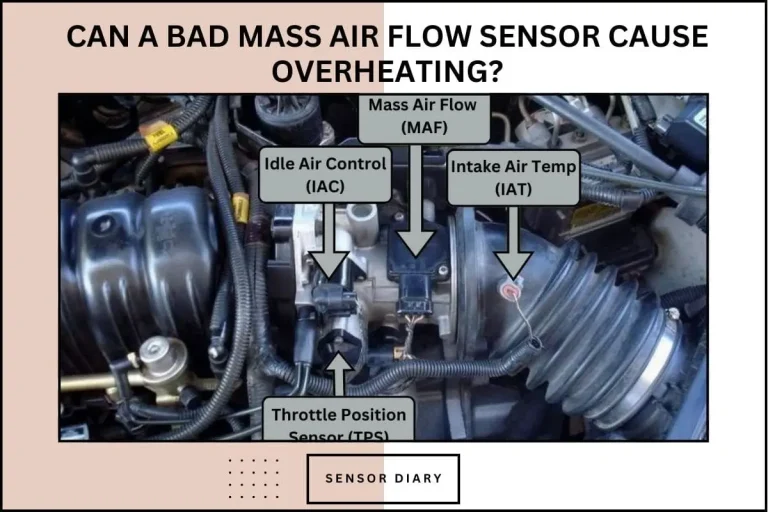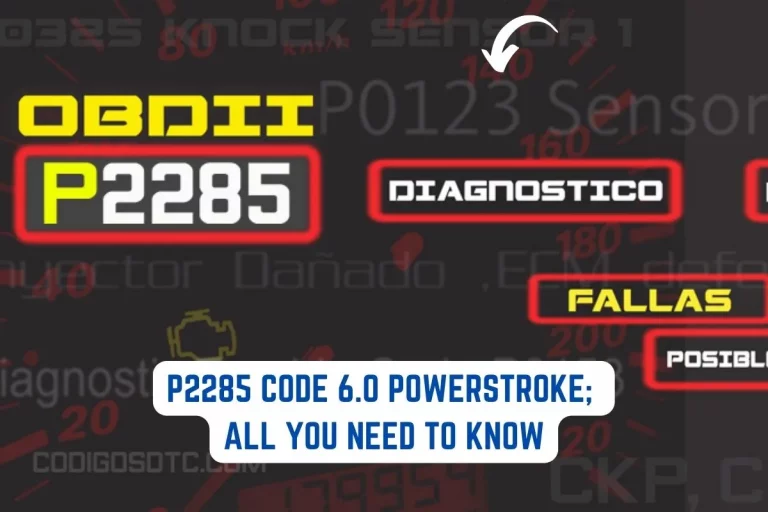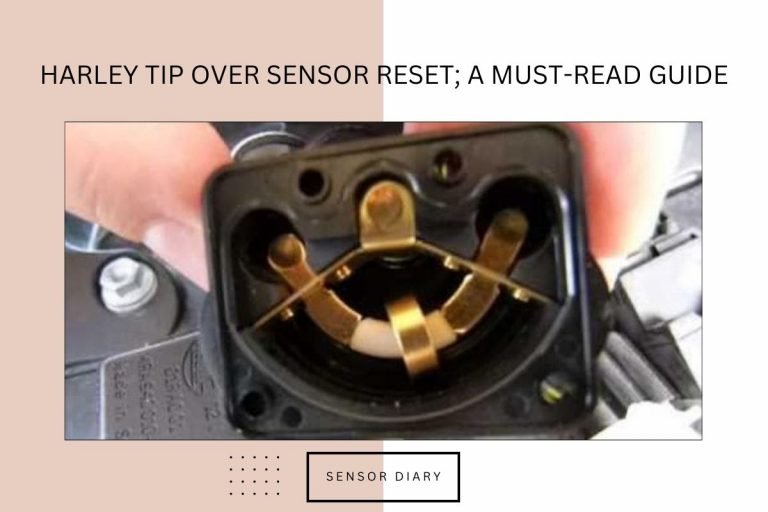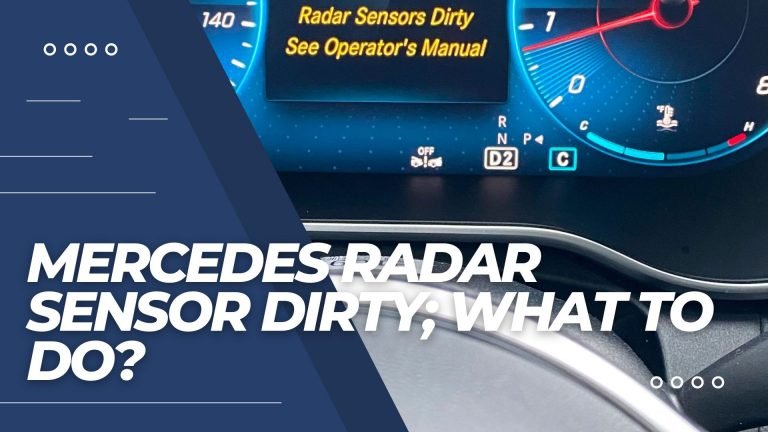What Happens If You Unplug A Map Sensor?
As a mechanic, I understand how important the various sensors in a vehicle are to its performance and overall operation. The MAP (manifold absolute pressure) sensor, for example, measures the pressure inside the intake manifold and sends the data to the engine control unit (ECU). The ECU uses this data to optimize engine performance and fuel efficiency by adjusting the fuel-air mixture, ignition timing, and other engine parameters.
What happens, however, if the MAP sensor is unplugged? The MAP sensor’s responsibility is to assess the load on the engine and adjust fuel delivery. Fuel delivery will be excessive without the MAP sensor, which could harm the engine and exhaust system (catalytic converters).
In this article, we’ll go over exactly what happens when you unplug a MAP sensor, including the symptoms, risks, and how to diagnose and resolve the problem. This article will provide you with valuable insights into one of the most critical sensors in a modern vehicle, whether you are a car owner or a mechanic. So let’s get started!
Table of Contents
What does a MAP sensor really do?
A MAP (manifold absolute pressure) sensor measures the pressure inside an engine’s intake manifold and sends the data to the engine control unit (ECU). This data is used by the ECU to calculate the optimal fuel-air mixture, ignition timing, and other engine parameters for maximum performance and fuel efficiency.
The MAP sensor essentially provides critical feedback to the ECU, allowing it to make real-time adjustments to the engine’s operation, ensuring it runs smoothly and efficiently under varying driving conditions.
What are the symptoms of a failing MAP sensor?
A faulty MAP (manifold absolute pressure) sensor can cause a variety of drivability issues and may cause the check engine light to illuminate. Here are some common MAP sensor failure symptoms:
Reduced engine performance: A failing MAP sensor can lead to a reduction in engine performance, including decreased power, acceleration, and fuel efficiency.
Rough idling: If the MAP sensor fails, the engine may idle rough or stall.
Engine stuttering: A faulty MAP sensor can cause the engine to stutter or hesitate during acceleration or when the throttle is quickly opened.
Rich or lean fuel mixture: The MAP sensor sends data to the ECU in order for it to calculate the proper fuel-air mixture. If it fails, the ECU may be unable to properly adjust the mixture, resulting in a rich or lean fuel mixture.
Check engine light: A failing MAP sensor can cause the check engine light to illuminate, indicating a problem with the engine control system.
If you notice any of these symptoms, it’s critical to have your vehicle diagnosed by a qualified mechanic to determine whether the MAP sensor is to blame or if there’s another problem at hand.
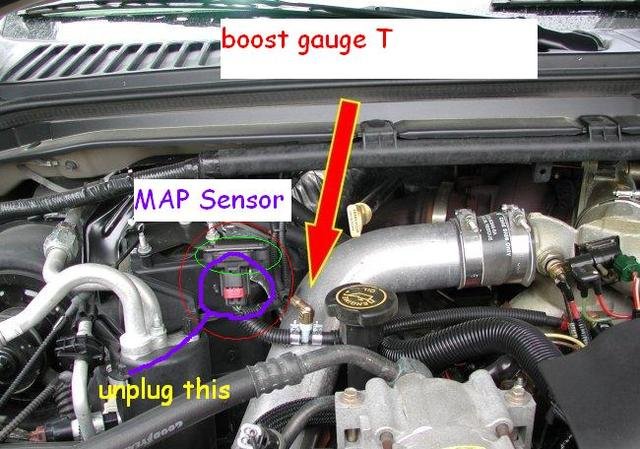
Can you replace the MAP sensor?
If a MAP (manifold absolute pressure) sensor is found to be defective, it can be replaced. It is important to note, however, that the replacement process varies depending on the make and model of the vehicle.
In general, the steps for replacing a MAP sensor are as follows:
Locate the MAP sensor: The MAP sensor is typically located on the engine’s intake manifold or throttle body.
Disconnect the electrical connector: To avoid damaging the wiring, disconnect the electrical connector before removing the sensor.
Remove the sensor: The sensor may be secured with screws or clips, depending on its design. Remove the sensor from its mounting location with care.
Install the new sensor: Replace the old sensor in the same location and secure it with screws or clips.
Reconnect the electrical connector: After installing the new sensor, reconnect the electrical connector.
Clear the codes: If the check engine light was triggered by a faulty MAP sensor, it may be necessary to use a diagnostic tool to clear the codes.
It is critical to ensure that the replacement MAP sensor is of high quality and meets the vehicle manufacturer’s specifications. If you are unsure about performing this replacement procedure yourself, a qualified mechanic can assist you.
What Happens If You Unplug A MAP Sensor?
Unplugging a MAP (manifold absolute pressure) sensor can result in a variety of issues that affect the vehicle’s drivability and performance. Here are some possible outcomes:
Poor engine performance: Without feedback from the MAP sensor, the engine control unit (ECU) may be unable to properly adjust the fuel-air mixture and ignition timing. As a result, engine performance suffers, including decreased power, acceleration, and fuel efficiency.
Check engine light: Unplugging the MAP sensor may cause the ECU to register a fault code, causing the check engine light to illuminate.
Rough idling and stalling: The ECU adjusts the engine idle speed based on MAP sensor data. Without this feedback, the engine may stall or idle rough.
Increased emissions: If the fuel-air mixture is not properly adjusted, the vehicle may emit more emissions, which can harm the environment and cause the vehicle to fail an emissions test.
Engine damage: Running the engine without a MAP sensor can cause damage to engine components such as pistons and valves in some cases.
It should be noted that unplugging the MAP sensor is not a recommended troubleshooting procedure. If you suspect a faulty MAP sensor, you should have it diagnosed and repaired by a qualified mechanic.
Should my car die if I unplug the MAP sensor?
Unplugging the MAP (manifold absolute pressure) sensor can result in a variety of issues, including engine stalling or rough idling. However, whether or not the car will die if the MAP sensor is disconnected depends on the vehicle and its engine control system.
Some engines may be able to function with limited functionality in the absence of the MAP sensor, while others may not. It is important to note that unplugging the MAP sensor is not a recommended troubleshooting step and may cause engine damage. If you suspect a faulty MAP sensor, you should have it diagnosed and repaired by a qualified mechanic.
MAP sensor unplugged runs better: why?
If your vehicle’s engine runs better when the MAP sensor is unplugged, it could indicate a malfunctioning MAP sensor or an issue with the engine’s fuel and ignition system. However, it is essential to address the root cause of the problem rather than attempting to trick or bypass the sensor.
A properly functioning MAP sensor provides vital information to the engine control unit (ECU) to ensure the optimal air-fuel mixture for combustion. If the sensor is faulty or disconnected, the ECU may default to a predetermined value, often referred to as a “limp mode.” This default value may provide a richer air-fuel mixture, which can sometimes result in improved performance in certain scenarios.
How to test a MAP sensor unplugged?
A diagnostic tool and some knowledge of engine performance are required to test a MAP (manifold absolute pressure) sensor. The following are the steps for testing a MAP sensor:
Step 01. Visually inspect the MAP sensor for any signs of physical damage, such as cracks or broken wires. If any damage is discovered, the sensor must be replaced.
Step 02. Examine the electrical connections: Ensure that the electrical connections to the MAP sensor are clean and securely connected.
Step 03. Connect a diagnostic tool: Connect a diagnostic tool to the OBD-II port of the vehicle and read the codes. If the MAP sensor fails, it will most likely generate a code related to the fuel system or engine performance.
Step 04. Check the voltage output: While the engine is running, use the diagnostic tool to check the MAP sensor’s voltage output. As the engine speed increases, so should the voltage output. To determine the correct voltage range for the specific make and model, consult the vehicle’s service manual.
Step 05. Check the vacuum readings: Using a vacuum gauge, check the vacuum readings while the engine is running. Compare the vacuum readings to the service manual specifications. If the readings are outside the specified range, a faulty MAP sensor may be the cause.
Step 06. Perform a smoke test: A smoke test can be used in some cases to check for vacuum leaks that could affect the MAP sensor’s readings. This entails injecting smoke into the intake manifold and inspecting it for leaks.
It should be noted that testing a MAP sensor necessitates the use of specialized equipment and knowledge. If you are unsure about performing these tests, have the vehicle diagnosed and repaired by a qualified mechanic.

